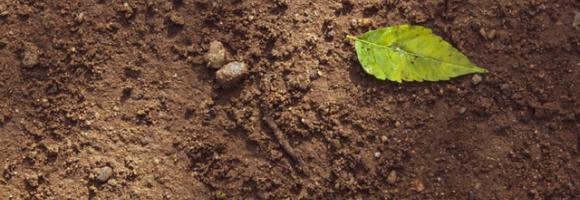
Indicator unit: Amount of carbon stored in the soil (0 to 30 cm depth), expressed in Mg (megagrams or tonnes) per km2.
Area of interest: The SOCI has been calculated at the country level, terrestrial ecoregion level and for all protected areas and is provided for each country and each terrestrial and coastal protected area of size ≥ 1 km2.
Policy question: There are two main policy questions to which the SOCI indicator is relevant: How do protected areas contribute, through the conservation of soil resources, to the fertility, health and productivity of the ecosystems and to the livelihoods of the local communities that depend on these resources? Soil organic carbon (SOC) is the main component of soil organic matter, which is critical for the stabilization of soil structure, retention and release of plant nutrients, and water infiltration and storage in soil. SOC is therefore essential to ensuring soil health, fertility and food production. The loss of SOC indicates a certain degree of soil degradation, and can happen through unsustainable management practices such as excessive irrigation or leaving the soil bare, without significant vegetation cover. How do protected areas contribute to soil carbon storage and hence to offset the impacts of fossil fuel emissions and to climate change mitigation? Soils represent the largest terrestrial organic carbon reservoir. Carbon stored in soils worldwide exceeds the amount of carbon stored in phytomass and in the atmosphere, and is the second largest global carbon store (sink) after the oceans. Changes in land use and land cover can cause SOC decreases and carbon emissions, which are one of the largest sources of human-caused carbon emissions to the atmosphere. Protected areas may contribute to soil carbon retention and hence to the reduction of net emissions of greenhouse gasses responsible for climate change.
---
Data Uploaded by Luca Battistella using the Digital Observatory for Protected Areas Services (2022)
Soil organic carbon
Soil organic carbon (SOC) is the carbon that remains in the soil after partial decomposition of any material produced by living organisms. Depending on local geology, climatic conditions and land use and management (amongst other factors), soils hold different SOC amounts.
The largest amounts of SOC are stored in the northern permafrost region, mostly in peat soils, where carbon accumulates in soils in huge quantities due to the low temperatures leading to low biological activity and slow decomposition of soil organic matter. In contrast, in dry and hot regions, plant growth is naturally scarce and only very little carbon enters the soil, leading to low SOC content. Climate change can also alter SOC levels, in contrasting magnitudes and directions depending on the considered regions.
Land cover and land use also have an important influence on SOC. Conversion of natural vegetation to cropland can cause large decreases in SOC levels. Unsustainable agricultural management practices such as excessive irrigation or leaving the soil bare are also drivers of important SOC losses, while the opposite is true for practices associated to sustainable soil management, such as mulching, planting cover crops, reduced or no tillage, moderate irrigation and judicious fertilization (Scharlemann et al., 2014; FAO and ITPS, 2018a, 2018b) . The SOCI provides useful information about the soil condition in protected areas, particularly when compared with other unprotected areas with similar environmental conditions, such as the unprotected buffers around protected areas. This information can contribute to identify potentially degraded areas, evaluate the conservation performance of protected areas, set restoration targets, and assess the contribution of protected areas to reduce net global carbon emissions.
Soil organic carbon
Soil organic carbon (SOC) is the carbon that remains in the soil after partial decomposition of any material produced by living organisms. Depending on local geology, climatic conditions and land use and management (amongst other factors), soils hold different SOC amounts.
The largest amounts of SOC are stored in the northern permafrost region, mostly in peat soils, where carbon accumulates in soils in huge quantities due to the low temperatures leading to low biological activity and slow decomposition of soil organic matter. In contrast, in dry and hot regions, plant growth is naturally scarce and only very little carbon enters the soil, leading to low SOC content. Climate change can also alter SOC levels, in contrasting magnitudes and directions depending on the considered regions.
Land cover and land use also have an important influence on SOC. Conversion of natural vegetation to cropland can cause large decreases in SOC levels. Unsustainable agricultural management practices such as excessive irrigation or leaving the soil bare are also drivers of important SOC losses, while the opposite is true for practices associated to sustainable soil management, such as mulching, planting cover crops, reduced or no tillage, moderate irrigation and judicious fertilization (Scharlemann et al., 2014; FAO and ITPS, 2018a, 2018b) . The SOCI provides useful information about the soil condition in protected areas, particularly when compared with other unprotected areas with similar environmental conditions, such as the unprotected buffers around protected areas. This information can contribute to identify potentially degraded areas, evaluate the conservation performance of protected areas, set restoration targets, and assess the contribution of protected areas to reduce net global carbon emissions.